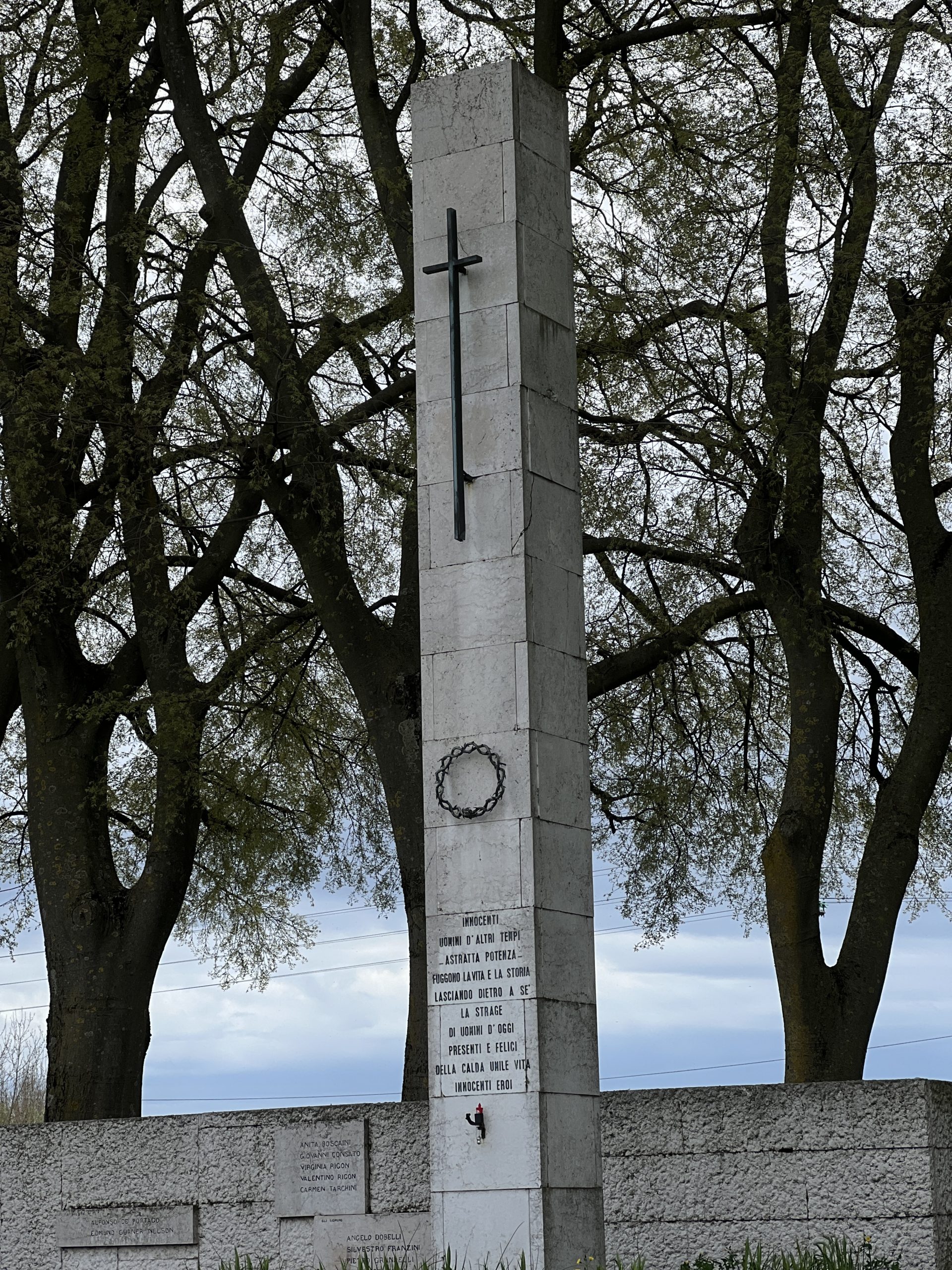Very recently, we watched the film “Ferrari”, based on a family recommendation, because of its locations. We’re definitely not car-people and so if not for the Italy connections, we might have by-passed it, but it was actually a great – and in places, shocking – watch. We did indeed know many of the locations, especially the scenes shot in Brescia, where we were about to stay with family. So, a thoroughly good watch, as described by Wikipedia – although if you’ve not seen the film, skip the quote, as it’s a BIG plot-spoiler…
In the summer of 1957, Italian entrepreneur Enzo Ferrari prepares his racing team for the Mille Miglia, an open road, endurance-based race lasting one thousand miles. Grappling with both domestic and professional crises, Ferrari and his estranged wife, Laura, grieve for their only son, Dino, who died a year prior. While he has kept Laura from learning of his infidelities, Ferrari’s mistress, Lina Lardi, pressures him to grant their illegitimate son, Piero, the Ferrari name as his confirmation nears.
Meanwhile, in the wake of the groundbreaking development of the team’s Formula One car, Ferrari’s manufacturing company is suffering from severe financial hemorrhaging. Faced with no other choice, Ferrari must merge with a sister company to continue doing business. However, Laura owns half of Ferrari’s shares, and in order to move forward on deals, Enzo must convince Laura to sign the entirety of the company over to him. A resentful Laura demands a check for $500,000, which will bankrupt the company if she cashes it. Laura confirms her suspicions that Enzo has been having an affair after finding where Lina and Piero live in the countryside outside Modena. Enzo agrees to write the check and trust her to wait.
As the Mille Miglia commences in Brescia, Ferrari encourages his drivers to remain ahead of the competition. During a pit-stop in Rome, Enzo’s newest addition to the team, Alfonso de Portago, refuses to change tires in order to stay in the lead; he suffers a blowout and loses control of the vehicle, which veers off the road, killing de Portago, his navigator, and nine onlookers in the resulting crash, including children. Another of Ferrari’s drivers, the veteran Taruffi, completes the round trip to Brescia and wins the race. Ferrari is blamed by the media for de Portago’s lethal accident, and Laura cashes her check to provide bribe money for journalists. She signs over the full rights to the company, requesting that in return, Enzo refrain from giving Piero the Ferrari name until after her death. Enzo agrees, and later brings Piero to his half-brother’s grave.
So, after a night in Brescia, we set off in the direction of Trieste, to head back to Istria, when we realised that the famous Mille Miglia museum was only 10kms away, and so a detour was made. Dedicated to the Red Arrow race (held between 1927-1957), the museum was established in December 1996 by a group of Brescian businessmen known as the “Friends of the Mille Miglia” and opened in 2004. The Museum aims to reconstruct this famous cultural sporting event, and has been able to establish a collection of rare, four-wheeled gems, which it exhibits in its museum, thanks to the devotion of private collectors and partnerships with other automobile museums, including a Cooperation Agreement the Mille Miglia has signed with the Mercedes-Benz Museum.
We’re absolutely not petrol-heads, but did find this a really fascinating visit – and some of the cars are just unbelievably beautiful. The location of the museum is pretty stunning, too – sitting within the grounds of the Sant Eufemia della Fonte Monastery, which dates back to 1008. In the museum shop, we particularly liked the glass floor which sits over some of the ruins, as it reminded us very much of our glass well cover. The museum shop is very cleverly located – you pay for your entrance tickets here, so have to access the museum through the shop and then exit through it. Very difficult not not make a purchase – and especially as some of the offerings are actually very tasteful. Clever, clever.
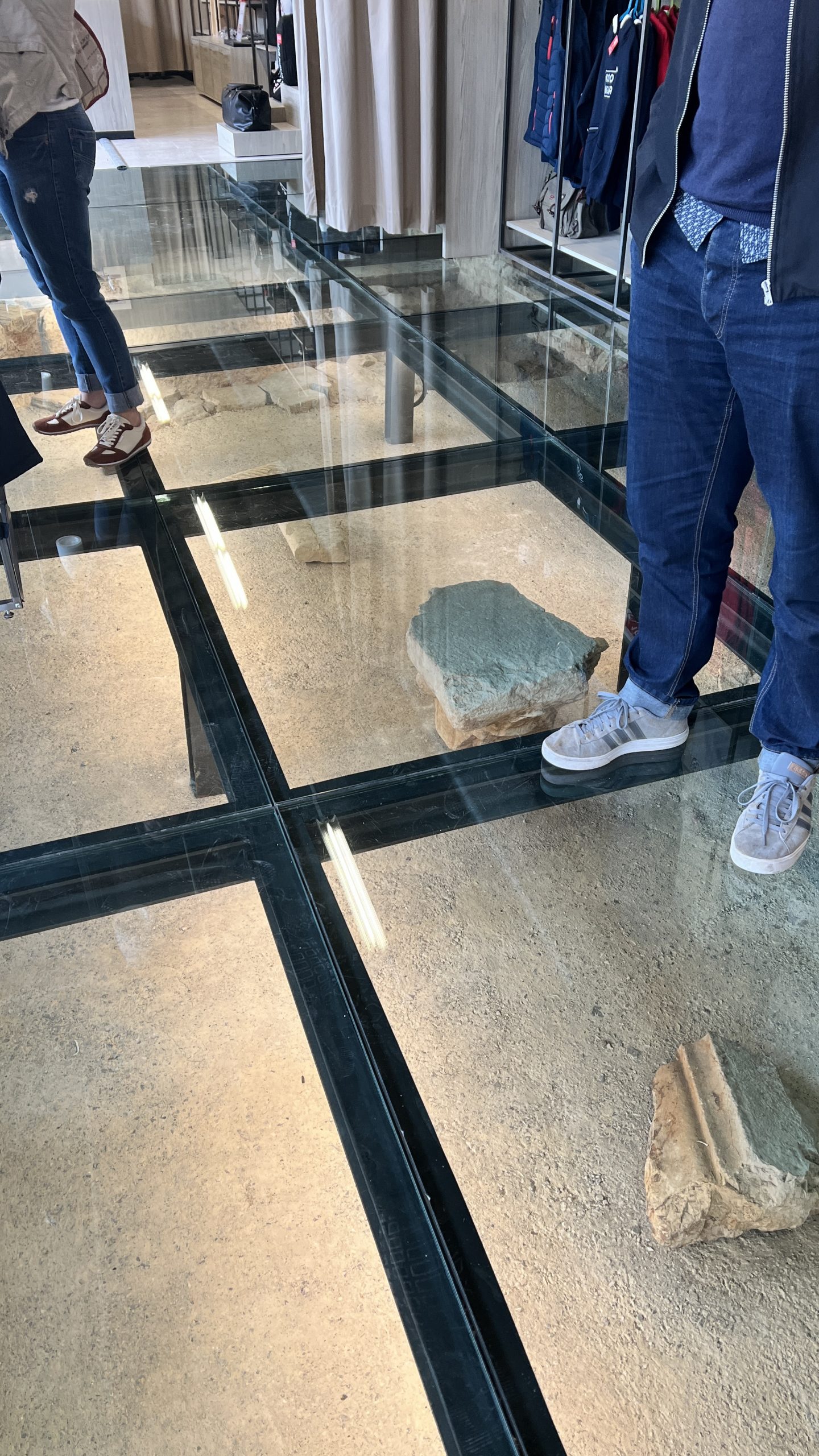
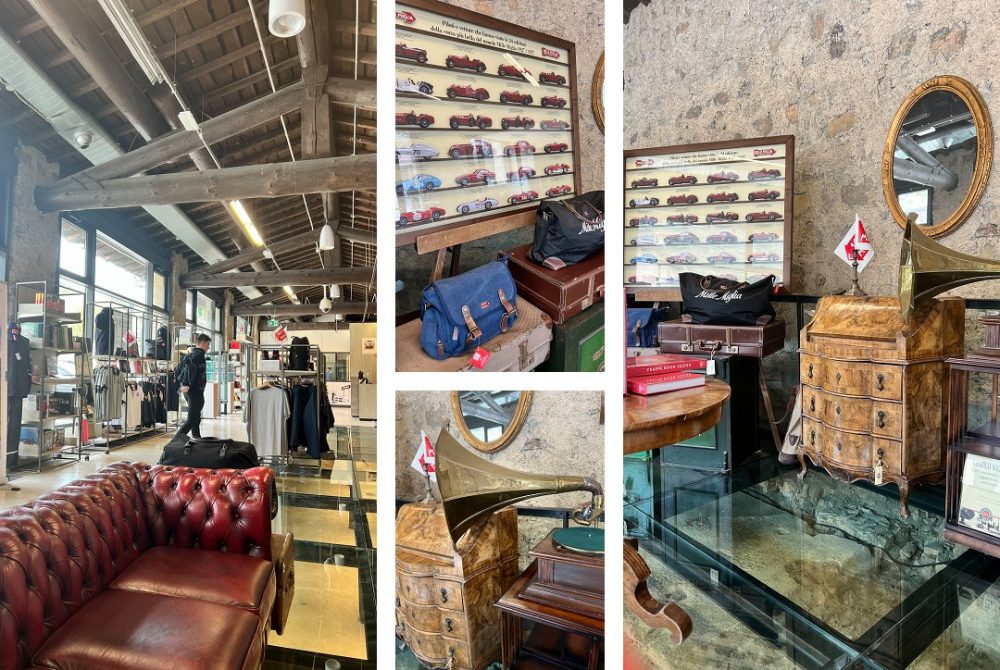
As well as a very decent display of quite astonishing cars from different eras, there are lots of photographs which explain the race through the ages and the personalities involved – accompanied by the background sound of car racing, which I didn’t find annoying, more immersive, as it made the whole thing seem a little more real. Anyway, the exhibits…
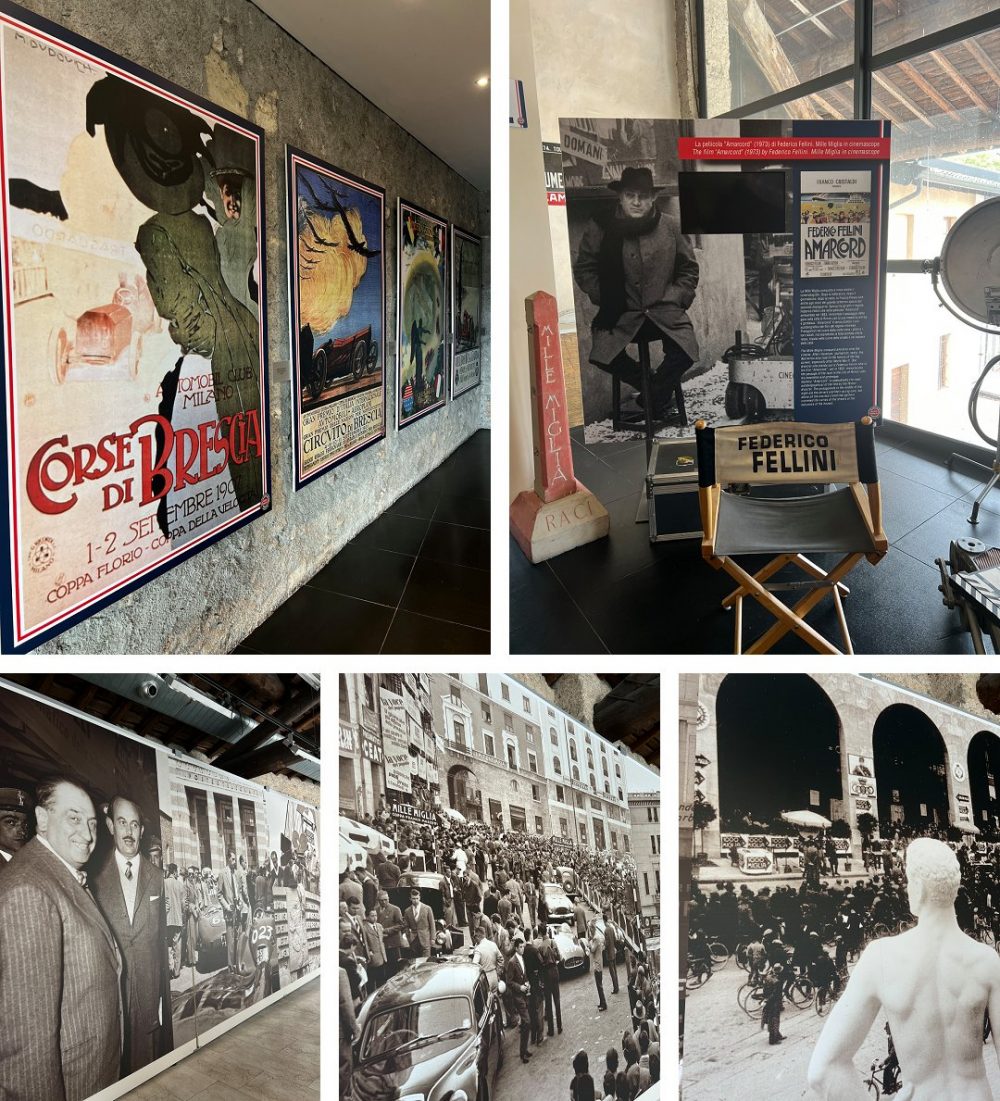
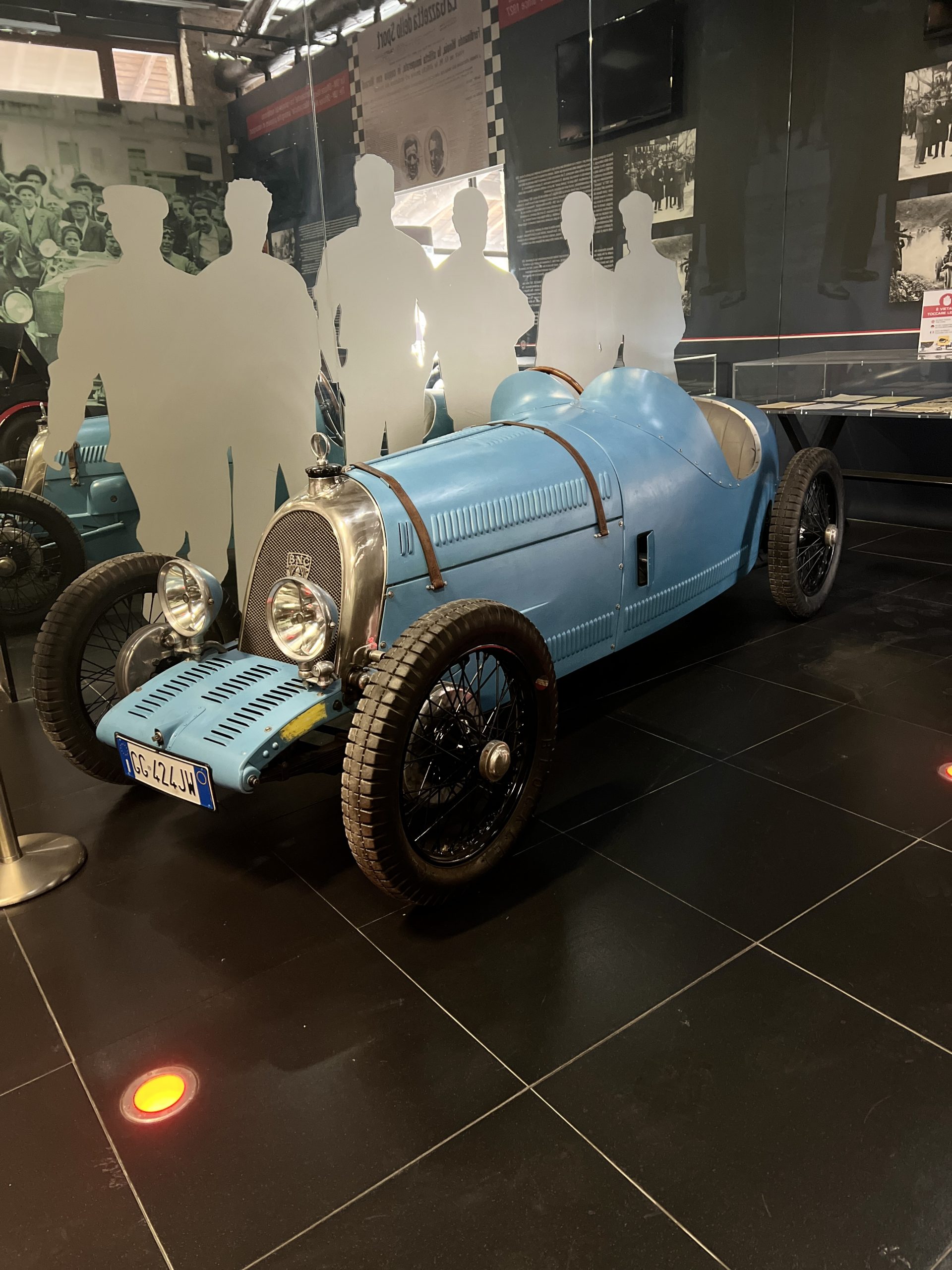
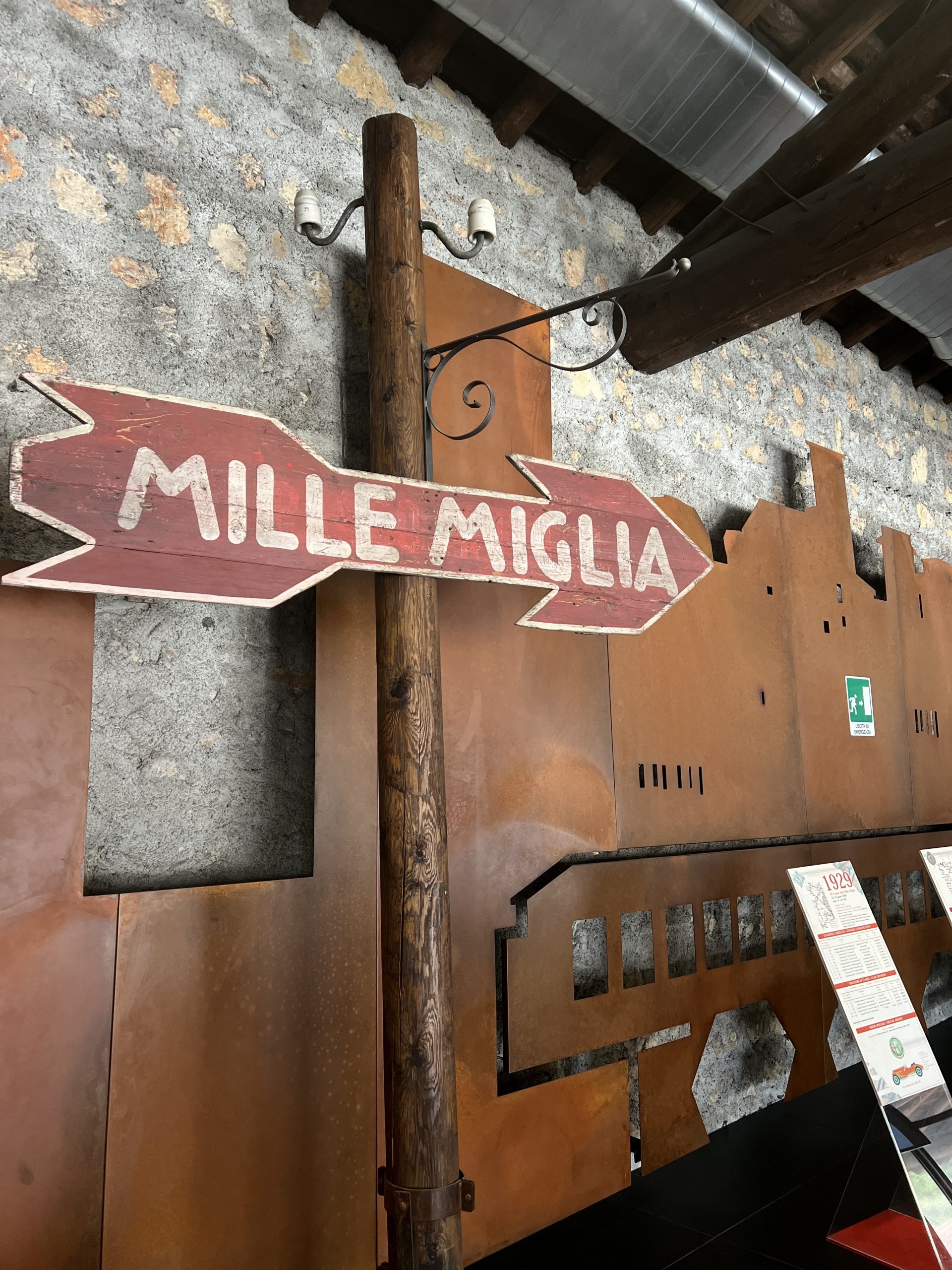
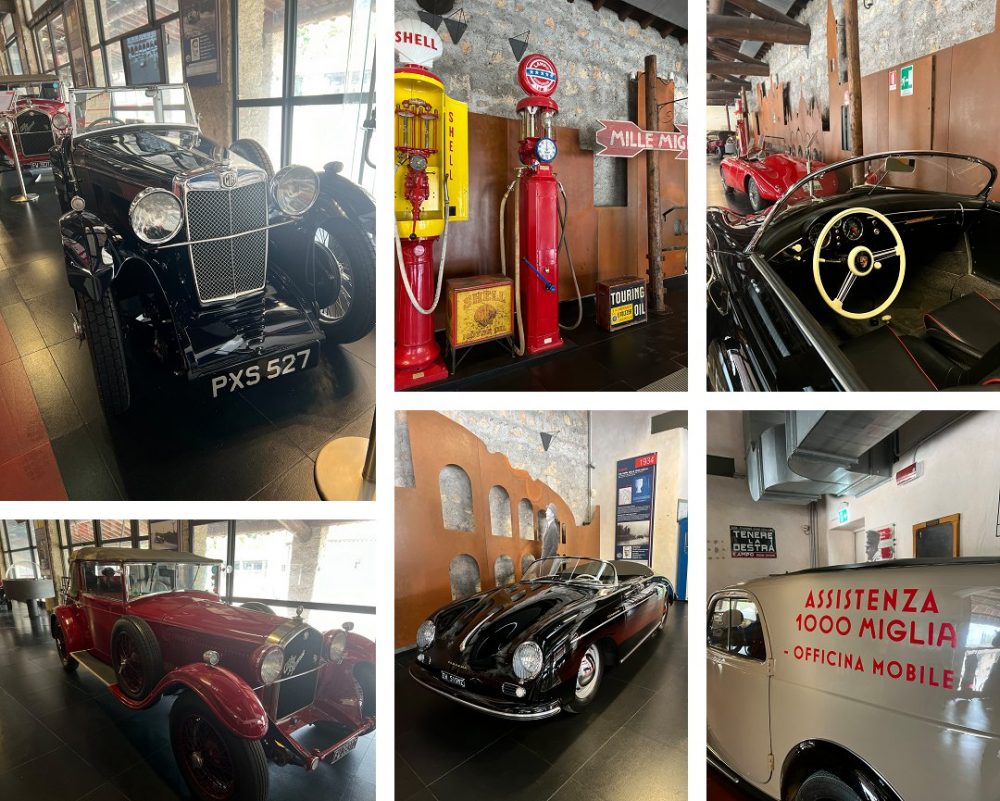
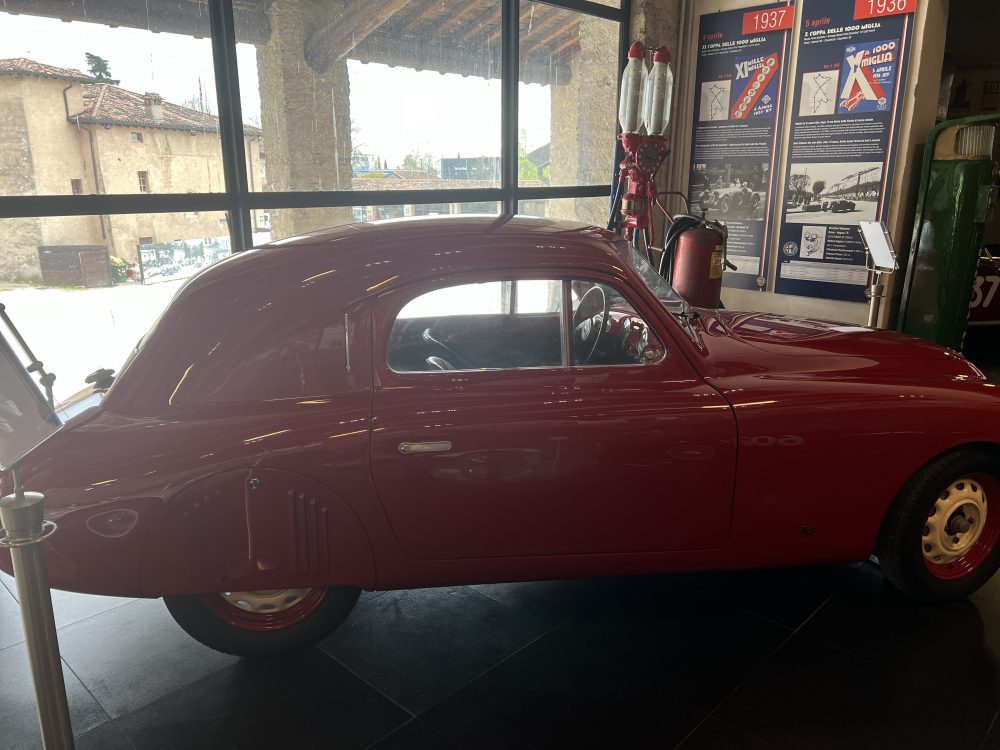
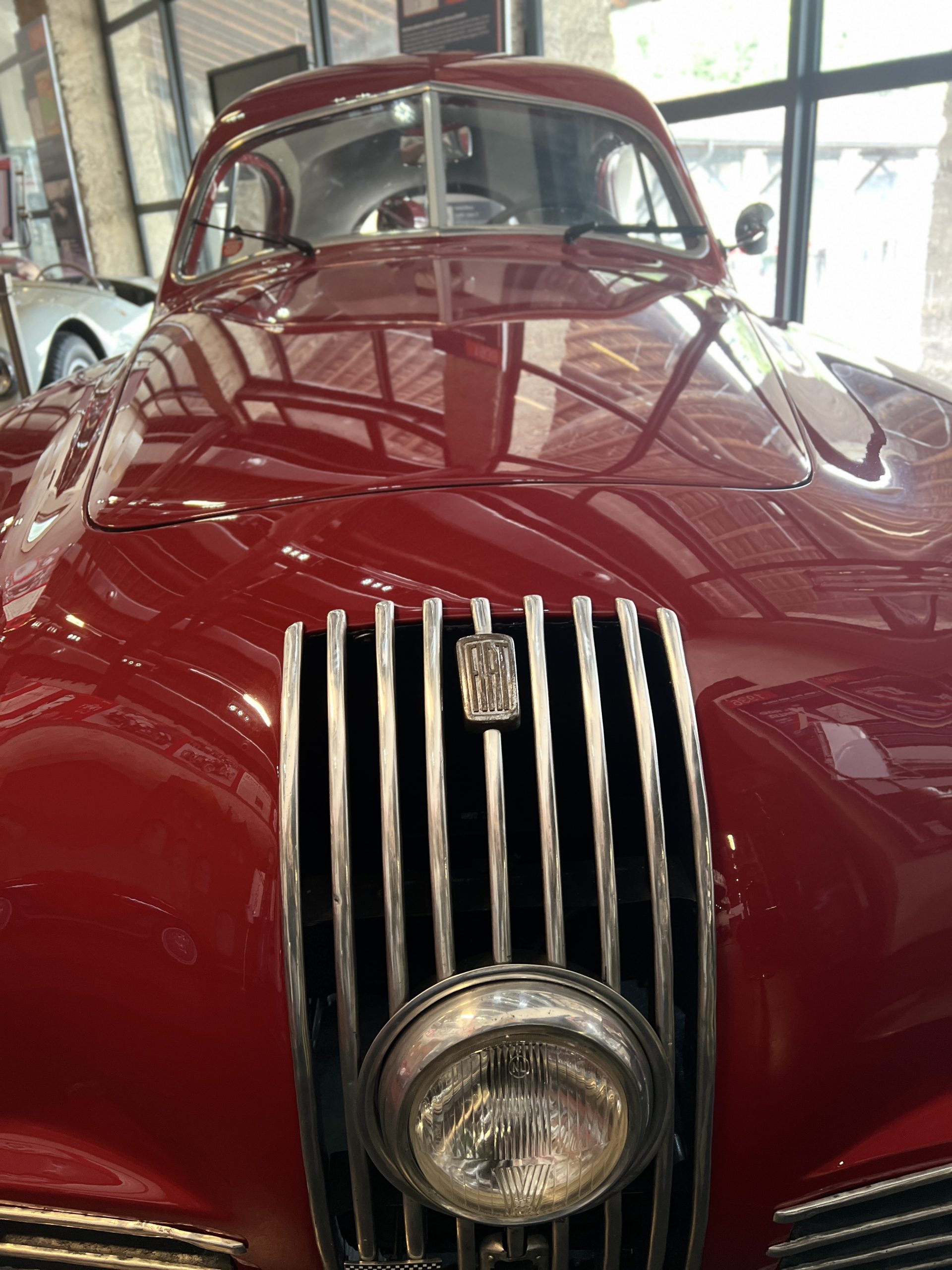
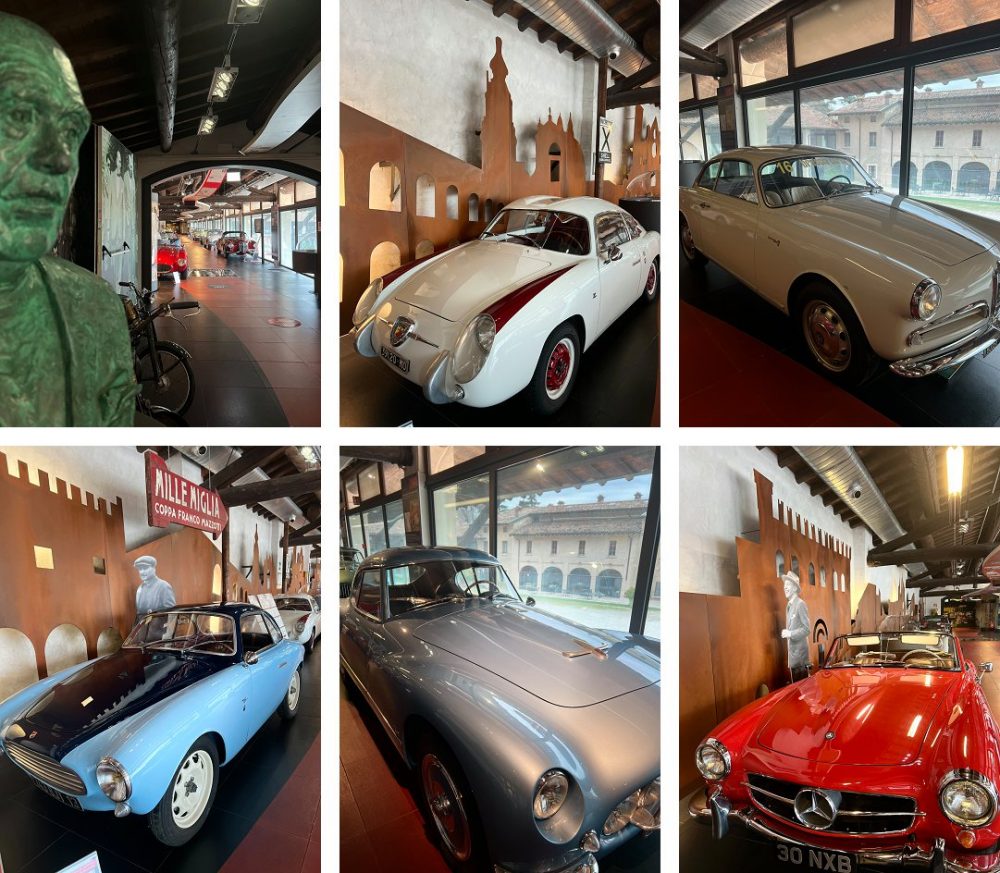
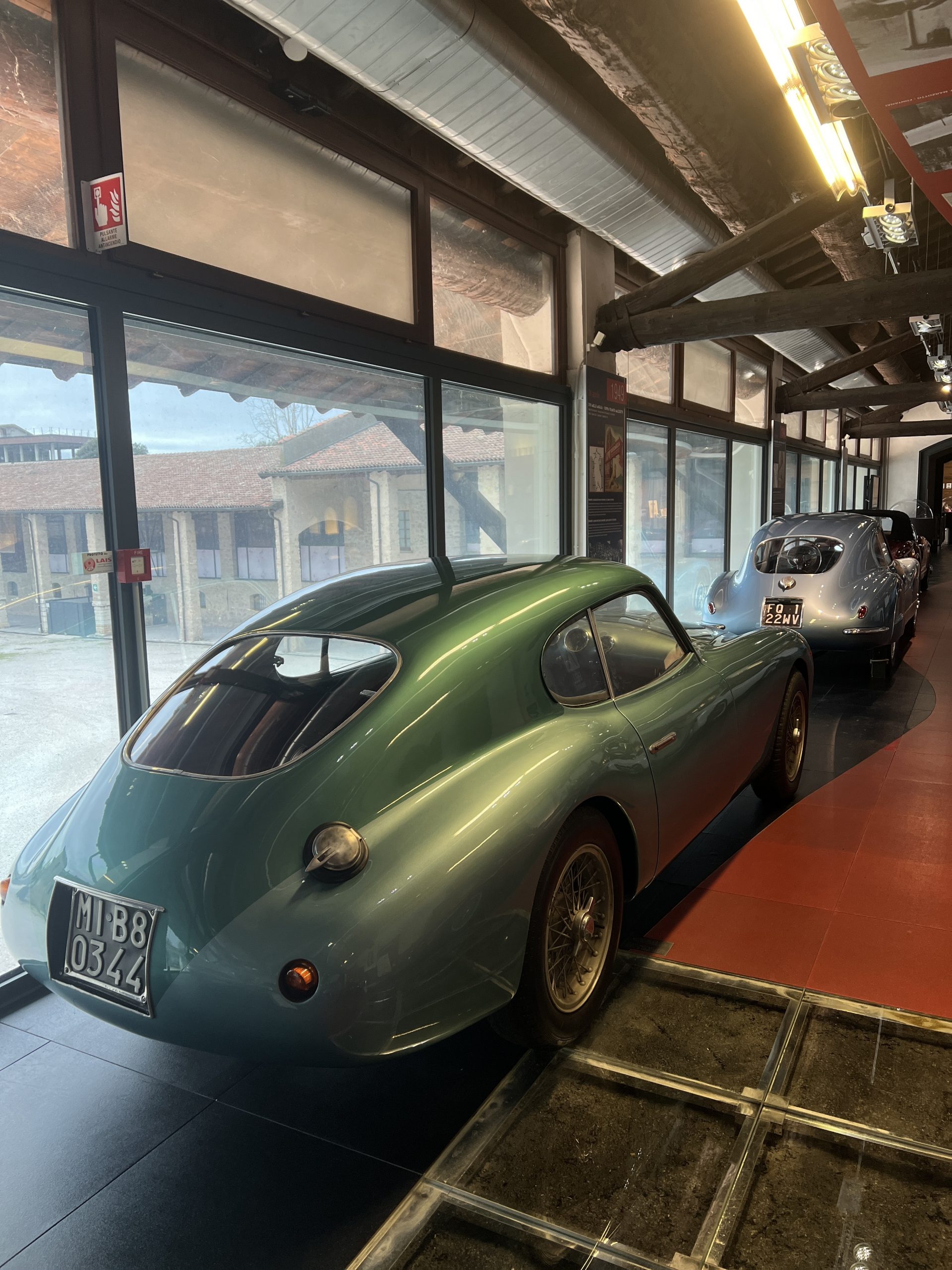
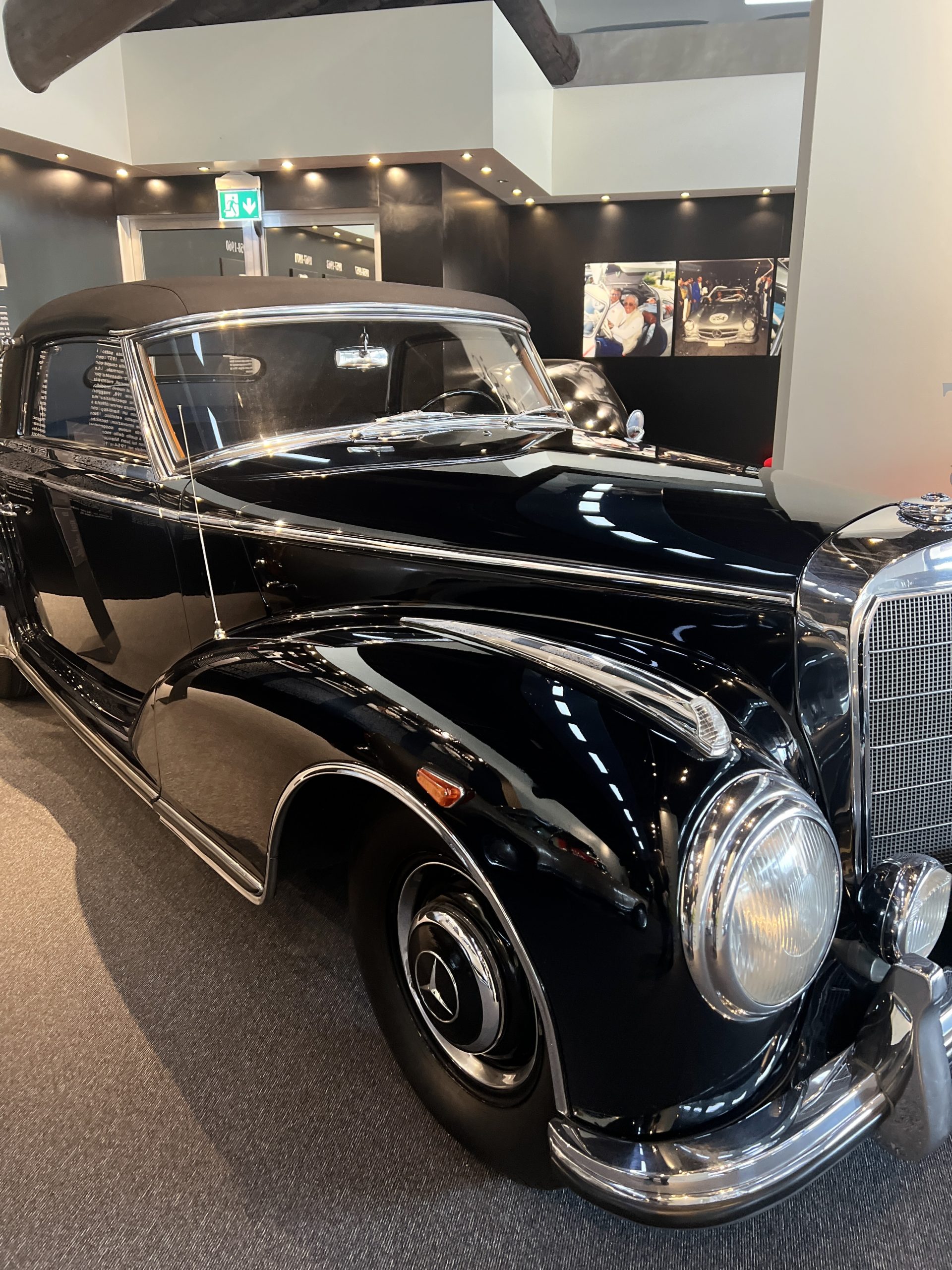
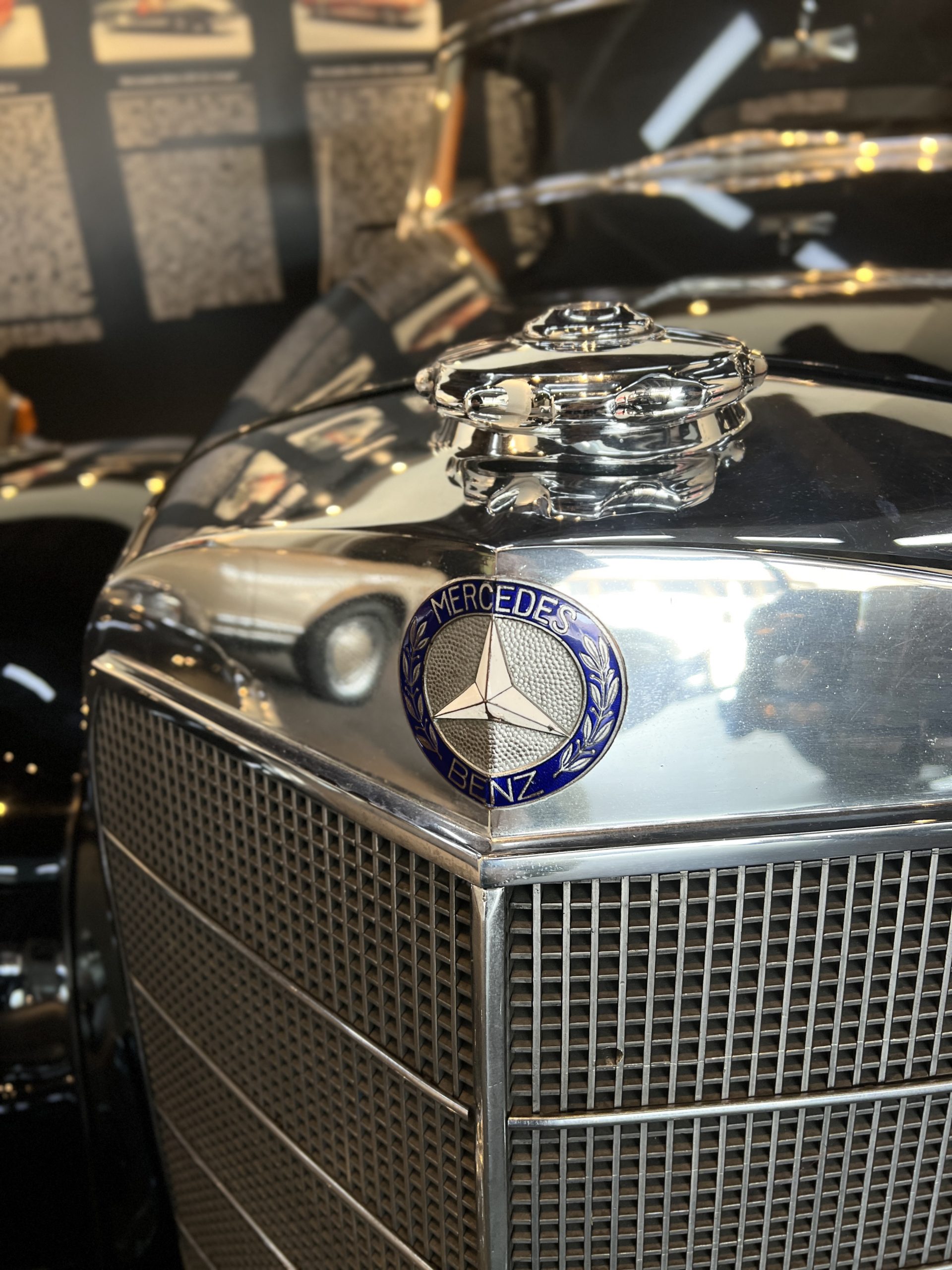
One of the most memorable scenes from the film “Ferrari” is the fatal crash scene, on a country road, near Guidizzolo, just outside of Brescia. It is a really shocking scene, especially if you know nothing of the events. In 1957, with only a few miles left in the grueling, 11-hour race, a Ferrari driven by the dashing Spanish racer Alfonso de Portago blew a tyre and tragedy struck the Mille Miglia. The damaged Ferrari spun out of control and flew off the road, instantly killing de Portago and his co-driver Edmund Nelson. Tragically, nine spectators were also killed—five of them children. The Mille Miglia was never raced again.
After leaving the museum we felt it would be fitting to visit the site, as we knew that a monument stood there, in memory of the people killed. All that marks the spot now, is a tall, slim monument, which could be easily missed if you weren’t actively looking out for it. There’s no real place to pull over, no car park for example, just a grass verge – and with lorries thundering past, we didn’t feel we were in the safest location, so didn’t linger. A very poignant visit, especially after the museum…
